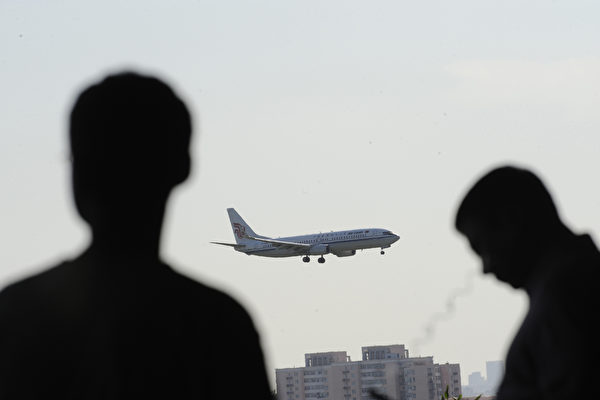During the pandemic, there has been an ongoing dispute between the United States and China regarding flight services, leading to a significant decrease in the number of flights between the two countries. Despite cautious and gradual measures taken by the governments of both countries to slowly revive the US-China air routes post-pandemic, the recovery of flight capacity between the United States and China has been slow. To date, direct flights have exceeded market demand, with seats remaining unfilled.
On August 2nd, data from the British aviation data company OAG showed that in July, the frequency of flights between the United States and China was only 23.6% of that in July 2019, with a seat occupancy rate of only 25% compared to five years ago. Analysts at OAG remarked that even during the summer travel peak in June and July, the demand has remained almost unchanged.
A report released by the Australian research consultancy CAPA-Center for Aviation on May 23rd highlighted that the pace of international capacity recovery in China this year remains slow, especially in the US-China market where flight restrictions are stringent and growth is limited.
Before the implementation of restrictions due to COVID-19, over 150 weekly round-trip passenger flights were allowed between the United States and China. On February 26th this year, the US Department of Transportation approved an increase in the number of Chinese airline flights to the US from the current 35 flights per week to 50 flights starting on March 31st.
According to the report by CAPA-Center for Aviation, in 2019, the United States was the 6th largest international capacity source for China, but by 2024, the U.S. has slipped to 13th place. Although all top 15 international markets are below pre-pandemic levels, the most significant decline is in the US market.
As of the week of May 13th, 2024, international seat capacity per week is still down by 75% compared to 2019 levels. In comparison to 2019, China’s international seat capacity has dropped by a total of 1.1 million seats per week, with the decline in the US-China market accounting for 7% of the overall decrease.
There are several reasons why the recovery of US-China flights and capacity has been challenging, including the tense geopolitical situation between the two countries, China’s crackdown on foreign companies, the implementation of new spy laws, leading to a reduction in business travel. The “zero-COVID” policy and travel warnings issued by the U.S. State Department for China have also made Americans think twice before traveling to China. For Chinese travelers, obtaining U.S. visas has become more difficult, and China’s economic slowdown has led to people tightening their purse strings, resulting in reluctance to embark on long-haul international travel. Additionally, direct flights between the US and China are expensive, prompting passengers to opt for cheaper and connecting routes.
A report by the South China Morning Post stated that Ker Gibbs, Resident Executive Director of the Asia-Pacific Business Research and Innovation Center at the University of San Francisco, mentioned that young Americans perceive limited job opportunities in China, while Chinese tourists lack funds for travel in the United States. “Chinese people who can afford overseas vacations do not necessarily see themselves as affluent, which makes them hesitant to spend money on long-distance travel,” he said.
Gibbs further added that the decrease in business travel is partly due to concerns from investors on both sides that the other party may take a confrontational stance towards their investments.
In terms of ticket prices, direct flights from the San Francisco Bay Area to Beijing, Shanghai, Guangzhou, and Wuhan cost over $1,600 round-trip, while connecting flights through Seoul or Taipei can save up to $300 per ticket.
OAG data revealed that in the summer of 2019, there were around 10,400 flights from China to the United States, with 61% operated by Chinese airlines. This summer, there are 2,500 flights, with a slight decrease in the market share of Chinese airlines as they have reached their frequency limits. In the short term, with the approaching U.S. elections, US authorities are unlikely to approve an increase in flight frequencies for Chinese airlines; it is hard to imagine any changes before the summer of 2025.
Not only in the US, but the number of foreign visitors traveling to China has drastically decreased. In May this year, BBC Chinese reported that the number of foreign travelers to China is only around 30% of the pre-pandemic levels in 2019.
The Chinese Ministry of Commerce stated in January this year that foreign investment flowing into China dropped by 8% last year, to approximately $157 billion, marking the first decline in ten years. Foreign companies now view China as a risky investment destination.
Meanwhile, the number of American students in China has plummeted from over 10,000 pre-pandemic to less than 1,000. Part of this decline is attributed to the Chinese government’s crackdown on traditional groups supporting student exchanges between the US and China. A law enacted by the Chinese government in 2016 places foreign non-governmental organizations working in China under the jurisdiction of the National Intelligence Agency and the Ministry of State Security. A US State Department official stated that concerns about the Chinese government’s exit bans and arbitrary detentions continue to be a focus of attention.
Furthermore, since March, the US State Department has included China in the “reconsider travel” list due to the risk of arbitrary detention and enforcement of Chinese laws.

